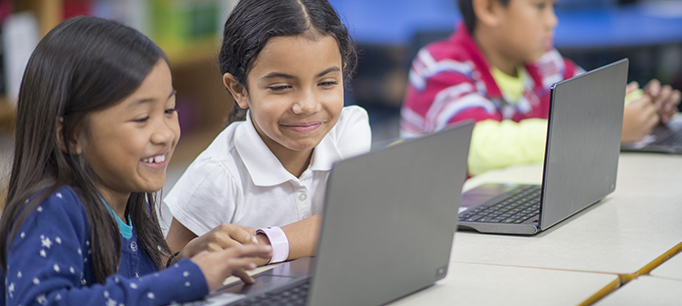When it comes to providing 21st century technology to all California public school students, the challenges loom large. Money and training are the two most prominent. A new PPIC report estimates that it would cost $3.8 billion over three years to provide bandwidth for digital learning, issue one device to every middle- and high-school student, and have one IT staffer for every 300 computing devices.
But leadership and collaboration are also powerful tools, and they can help the state, districts, and schools make progress. That is a key takeaway from a panel discussion on education technology sponsored by PPIC last week.
Geoff Belleau, an education program consultant to the California Department of Education, and Ling Ling Chang, Southern California assemblymember, each mentioned public-private partnerships—with Internet providers and other businesses—as ways to fund and deliver technology to California students.
Darryl Adams, superintendent of the Coachella Unified School District, showed how far leadership and collaboration has taken his district, which has plenty of challenges. In his district, 100% of students are eligible for free or reduced-price meals and 60% are English Learners. Thousands of students are the children of farm workers, and many are undocumented. Many lack high-speed Internet access.
Adams turned to the voters, who approved a local bond measure to fund technology upgrades, and uses federal and state funds for training and implementation. The district provides a tablet to every student from preschool through high school. School buses in the 1,250-square-mile district are equipped with WiFi routers and solar panels to connect students to the Internet. After the buses have made their rounds, they are parked near trailer parks or other areas where homes lack connectivity, effectively serving as mobile hot spots. The district has also developed its own program to train teachers to integrate digital learning in the curriculum.
There are still problems, he acknowledges, but his community has demonstrated the will to solve them. And failure is not an option.
“I’ll put a router on a pigeon and fly him around the neighborhood if I have to,” he said. “Kids have to be connected.”
Anne Neville, director of the California Research Bureau summed up, “It doesn’t all have to be perfect. And it all doesn’t have to be done everywhere for things to start happening.”
Patrick Murphy, PPIC research director, moderated the panel.
Before the discussion, Niu Gao, research fellow at PPIC, and author of the new report on technology provided an overview of her findings.
Read the report Upgrading Technology Infrastructure in California Schools


